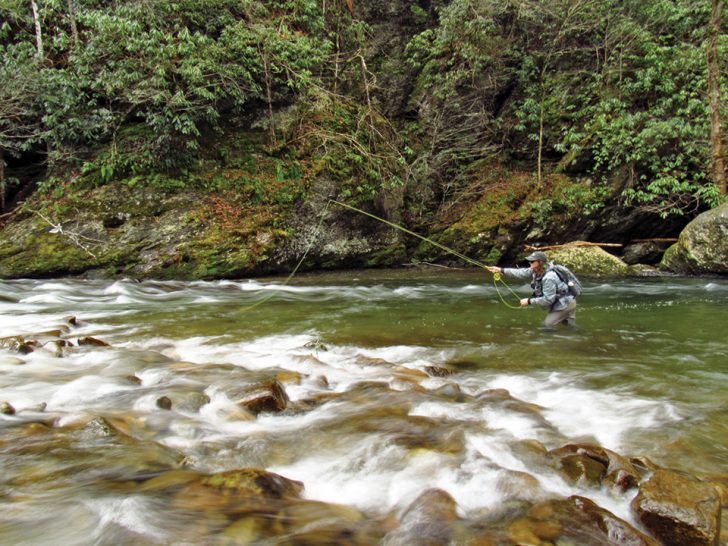Guide Ian Rutter is fired up about spring in the Great Smoky Mountains National Park. Ample rains and a mild winter bode well for the wild trout that inhabit more than 800 miles of trout streams in the park.
This time of year, fish are perking up to feed on an abundance of aquatic insects. But there’s another reason the Smokies are inviting to anglers in spring. The summertime crowds, with their campers and inner tubes, haven’t yet invaded the larger rivers.
Ian and his wife, Charity, run R&R Fly Fishing out of Townsend, Tennessee. They have guided anglers in the park for a quarter century and live a stone’s throw from Little River, one of the largest and most popular streams in the Smokies.
From high-elevation brook trout rills to roadside rivers, they fish it all, but Ian said it’s wise to stick to the larger flows in lower elevations this time of year. In March, and even into April, it’s likely there will still be snow on the ground up in the hills. Trout thrive in cold water, but their metabolisms slow, and they feed less readily in icy temperatures. Also, the bugs they feed on are mostly dormant at higher altitudes, which can make things slow for fly fishing.
Meanwhile, down in the valleys, larger rivers like Little River, Deep Creek and the Oconaluftee will be waking up. In afternoons, even on cold days, fish should be looking to the surface for hatches of mayflies like Quill Gordons, blue-winged olives and blue quills. Throw in a few early brown stoneflies, and you’ll see why the Smokies are known for great dry fly fishing.
“Oftentimes you’ll have some combination of those bugs all at the same time,” Ian said. “They’re not too particular. And even the one’s that are particular aren’t as particular as some folks think they are.”
Being sneaky is more important than fly selection, Ian said. Trout in the Great Smoky Mountains National Park are wild, stream-born and extremely wary of predators. So wading very carefully and making short accurate casts are important to success.
Another thing about trout in the Smokies is they grow slowly. Fishing is less about catching big fish and more about the overall experience.
“I like to say, ‘your results may vary,’” said Ian when asked about angler expectations. “We do catch some 16-inchers, but the important thing to remember is it’s a wild trout fishery. There aren’t any stocked trout that were put in last week at 14 inches. A 16-incher might be 10 years old. It’s survived every type of predator out there, so it’s super-smart and difficult to catch.”
A proficient angler can expect to catch good numbers of brightly colored 8- to 10-inch wild trout. Any angler can expect to wade through some of the most gorgeous mountain trout water in the East.
For information on fishing the Great Smoky Mountains National Park, contact R&R Fly Fishing through their website at randrflyfishing.com.

